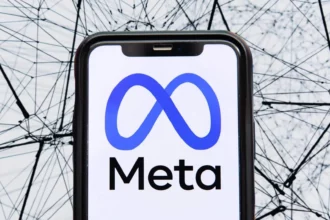Understanding LLM and Deep Learning: Key Differences
Imagine you are a painter with a magical palette filled not just with colors but with words and images. Large Language Models (LLMs) and Deep Learning Models (DLMs) are the magical brushes that can transform your canvases into intricate stories and captivating visuals. Let’s dive into the realm of LLMs and deep learning to uncover their distinctive nuances.
LLMs, such as LaMDA, PaLM, and GPT-3, are neural networks specifically designed to process vast amounts of text data to generate or comprehend language effectively. On the other hand, DLMs (Diffusion LMs) go beyond text by incorporating different media types like images, audio, and video. These models open up avenues for more diverse content creation—imagine describing an image to generate it magically.
One key aspect setting LLMs apart from deep learning models is their architecture. For instance, the Transformer architecture—a cornerstone in GPT models—utilizes an encoder-decoder structure for parallel processing, attention mechanisms capturing words across sequences, multi-headed self-attention for different input segments, and position embeddings to maintain word order integrity.
Did you know that BERT (Bidirectional Encoder Representations from Transformers), a Google innovation post-Transformer Architecture, focuses on understanding text intent using contextual clues? It stands out with features like masked language modeling and bidirectional context representation.
When it comes to image generation models like DALL-E 2 by OpenAI or Stable Diffusion’s open-source version, each has its strengths and limitations. While DALL-E 2 excels in producing real-like images from textual input but demands robust computational resources, Stable Diffusion offers creative image generation at a budget-friendly cost point.
Understanding these nuances between LLMs like GPT-3 (ChatGPT), PaLM by Google Brain and DeepMind, Bard by Google’s AI wing resonates deeply in realizing their impact on tasks ranging from content creation to code analysis. These models possess unique strengths despite facing challenges like misinformation spread or biased outputs.
As technological advancements continue to shape our AI landscape, exploring the potential of large language models remains both thrilling yet cautionary due to challenges around bias reinforcement or ethical uses of AI-generated content. In this evolving era of AI literacy, delving deeper into these advanced tools can spell transformative outcomes for businesses keen on leveraging their capabilities intelligently.
Don’t miss out on how AI-driven insights can propel your business growth in ways you never imagined—keep reading for more insights into futuristic tech interventions!
Table of Contents
ToggleHow NLP, LLM, and DLM Compare: A Detailed Analysis
In the realm of language processing technologies, Natural Language Processing (NLP) and Large Language Models (LLMs) play significant roles. While NLP is a family of algorithms developed since the 1950s to understand, manipulate, and generate human language through tasks like translation and sentiment analysis, LLMs are deep neural networks designed to generate or comprehend language using massive text data. Popular LLMs include LaMDA, PaLM, BLOOM, GPT-3, and RoBERTa. The distinction between NLP and LLM lies in their underlying capabilities—NLP excels in simpler tasks with models like decision trees, while LLMs rely on complex deep learning models demanding substantial computational power for tasks requiring a profound understanding of language.
- LLMs like LaMDA, PaLM, and GPT-3 are designed for processing text data effectively.
- DLMs, such as Diffusion LMs, incorporate various media types like images, audio, and video.
- LLMs use architectures like Transformer with encoder-decoder structure and attention mechanisms.
- BERT focuses on understanding text intent using contextual clues with features like masked language modeling.
- Image generation models like DALL-E 2 and Stable Diffusion have unique strengths and limitations.
- Exploring LLMs’ impact on tasks from content creation to code analysis reveals their significance in the AI landscape.
Differences Between NLP and LLM:
- Functionality:
- NLP covers a broader spectrum of functions such as text analysis, language recognition, and translation.
- LLM is specifically focused on generating and understanding text with the help of large datasets.
- Complexity:
- LLMs are generally more complex than traditional NLP systems.
- They require more data and computational resources due to their deep learning nature.
- Applications:
- NLP finds uses in sentiment analysis, risk assessment, customer service enhancement.
- On the other hand, LLMs excel in creating financial reports, conducting market analyses, and automating customer interactions.
By grasping these nuances between NLP and LLM technologies in analyzing and generating human language at scale with their distinctive features tailored for varying tasks complexity can aid businesses in leveraging appropriate tools effectively based on their requirements.
Applications and Examples of LLM in AI
Applications and Examples of Large Language Models (LLMs) in Artificial Intelligence showcase the diverse range of tasks these advanced models can perform, revolutionizing various industries and domains. From creating engaging content to aiding in research and development, LLMs have made significant strides in reshaping AI applications.
- Natural Language Understanding: Large Language Models like GPT-3 excel in natural language understanding, enabling them to comprehend and generate human-like text with remarkable accuracy. These models are widely used in chatbots, virtual assistants, and language translation services.
- Content Creation: LLMs play a crucial role in content creation across different media platforms. Whether it’s generating articles, scripts for videos, or even designing marketing campaigns based on consumer insights, LLMs such as LaMDA and BLOOM showcase their versatility.
- Data Analysis: In sectors where data analysis is pivotal, LLMs aid researchers and analysts in processing vast amounts of information quickly. For instance, PaLM has been instrumental in automating financial reports generation and market analysis tasks.
Moreover, Large Language Models have found applications in sentiment analysis to gauge public opinion on products or services effectively. These models leverage the power of deep learning to analyze text data at scale accurately. Companies across various industries are harnessing the capabilities of LLMs to gain insights into customer sentiments and preferences for informed decision-making.
The advancement of LLM technology continues to drive innovation across sectors like healthcare, finance, marketing, and more. By leveraging the power of these models intelligently—whether for personalized customer interactions or streamlining business processes—organizations can stay ahead of the curve in an increasingly competitive landscape shaped by AI interventions.
LLM vs. Generative AI: What Sets Them Apart?
In the realm of artificial intelligence, the distinctions between Large Language Models (LLMs) and Generative AI are key to understanding their unique characteristics and applications. LLMs and generative AI differ in several aspects, including their capabilities, model architectures, training data, and limitations.
Capabilities of LLMs:
LLMs are renowned for their exceptional ability to comprehend language patterns accurately for tasks like predictive text generation. These models are specialized in understanding human-like text based on the patterns they have learned from extensive training data sets. Their primary focus lies in text-based data analysis and generation.
Scope of Generative AI and LLM:
Generative AI encompasses a wide range of models capable of producing diverse content beyond just text, such as images, music, and even code. This field is known for its versatility in generating innovative content across multiple media forms. On the other hand, LLMs excel specifically at processing language patterns to generate textual content with high precision.
Choosing the Right Approach:
When deciding between generative AI and LLMs for a particular task or project, it’s essential to consider factors like the scope of content generation required. If your project involves creating varied forms of content beyond text—like images or music—generative AI might be more suitable. However, if precise language understanding and textual generation are paramount, opting for LLMs would be ideal due to their specialization in this area.
Understanding these distinctions can help businesses make informed decisions when selecting the most appropriate technology for their specific needs. Each approach offers unique capabilities that can be leveraged effectively based on the desired outcomes of a project or task.




